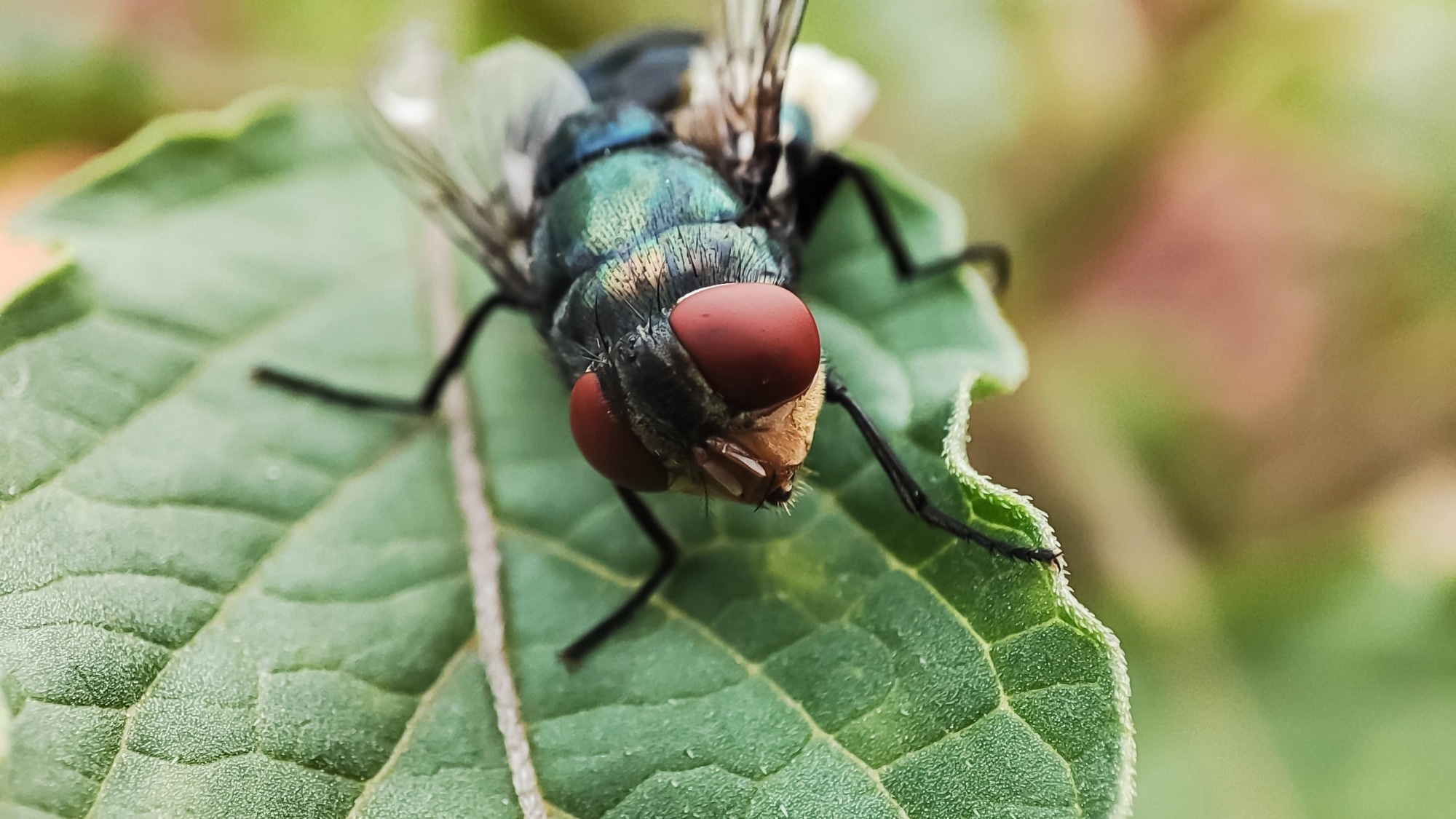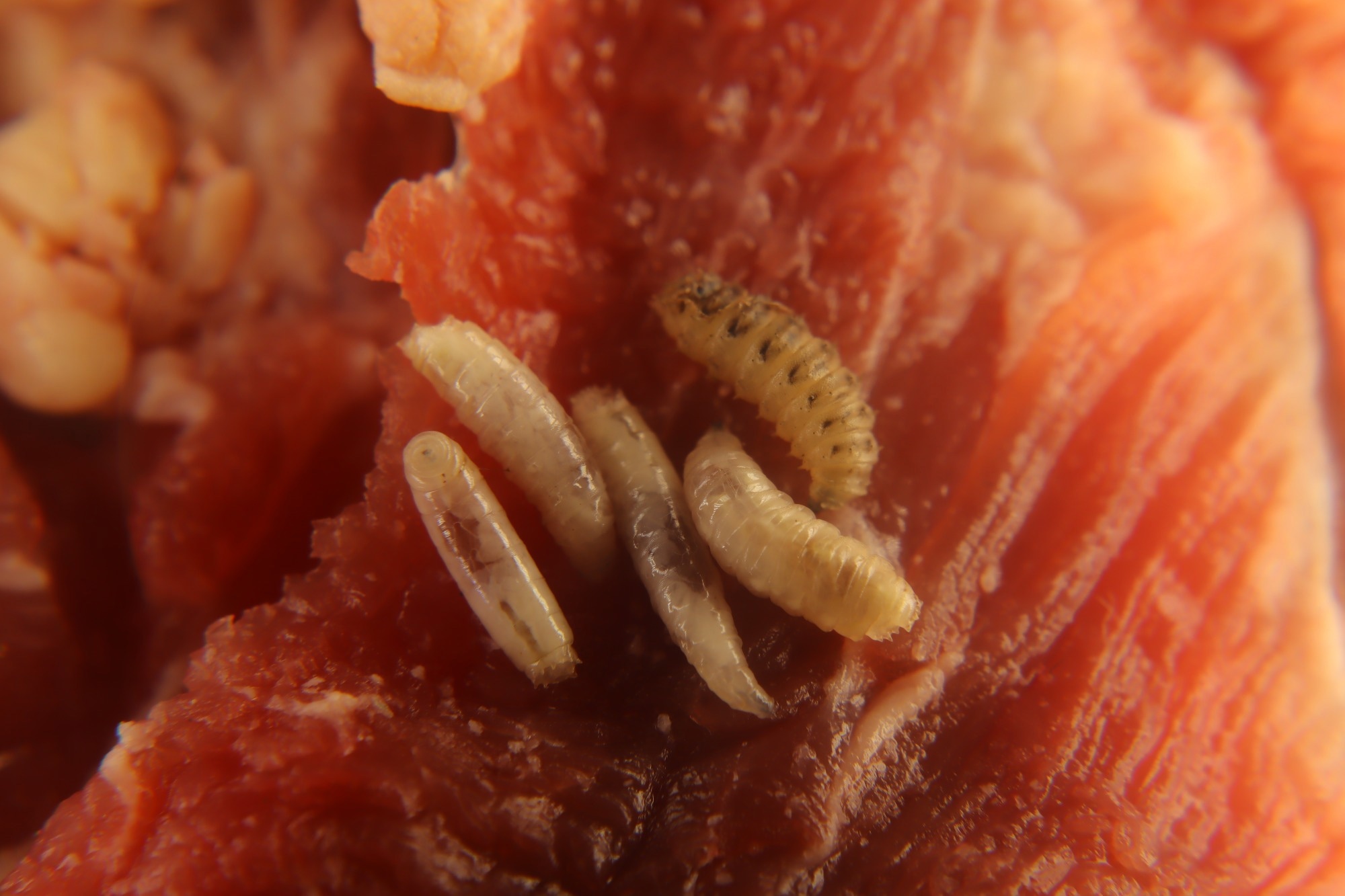Introduction
From eradication to re-emergence
Health and economic burden of NWS
Surveillance and international cooperation
Symptoms, diagnosis, and treatment of myiasis
Conclusions
References
Further reading
A deadly flesh-eating parasite is moving northward, and experts are racing to stop its advance with sterile fly programs, new drugs, and international cooperation.
 Cochliomyia hominivorax, the New World screwworm fly. Image Credit: Bayumuerti / Shutterstock.com
Cochliomyia hominivorax, the New World screwworm fly. Image Credit: Bayumuerti / Shutterstock.com
Introduction
On August 4, 2025, a human case of New World screwworm (NWS) infection was reported in a Maryland man who recently returned from El Salvador to the United States. This case was reported less than one month after Mexico reported a patient infected with NWS about 370 miles south of the U.S.-Mexico border.
Given these recent developments, it is essential to examine the biology of NWS, its mode of spread, and the implications of its re-emergence in North America for both public and veterinary health in the region.
From eradication to re-emergence
Cochliomyia hominivorax is a fly found throughout Central and South America, the Caribbean, except Chile, that carries NWS, a parasite that causes myiasis. During infection, fertile female flies lay their eggs in open wounds or other forms of damaged live tissue, such as skin ulcers or tick bites. Thereafter, larvae will feed on the host’s dead or living tissue, liquid fluids, or ingested food.1
One female can lay 200-300 eggs at a time and may lay up to 3,000 eggs during her 10- to 30-day lifespan.2
During the 1930s–1950s, the sterile insect technique (SIT) program was developed and later implemented across the southern United States, Mexico, and eventually Central America to eradicate C. hominivorax. This public health measure involved the release of large numbers of infertile male flies that were previously irradiated to confer infertility. Mating between sterile males and wild females prevents reproduction, which led to a gradual reduction in the fly population until the U.S. was declared screwworm-free in 1966, Mexico in 1991, and Central America by 2006.3
Despite these efforts, five NWS outbreaks were reported in Darién, Panama, in 2021, with six NWS infection cases reported in domestic animals. The following year, an additional six outbreaks were reported within this region, and by late 2024, a total of 788 outbreaks and 3,847 animal cases were recorded across Panama, Costa Rica, Nicaragua, Honduras, and Guatemala, with NWS cases also reported in humans.3
CORRECTION: US confirms first human case of travel-associated screwworm | REUTERS
Various natural factors have facilitated the recent spread of NWS, including C. hominivorax flies traveling farther distances to search for food and mating opportunities. Nevertheless, human-related activities are considered the primary cause of NWS outbreaks, particularly the long-distance movement of infected livestock or other animals. Rising global temperatures have also created more hospitable environments for NWS that were previously unsuitable for their proliferation and survival.3
Health and economic burden of NWS
This transboundary parasite represents a significant threat to livestock across the Americas… and presents a risk to both animal and human health.3
NWS is a persistent and significant threat to livestock, including cattle, pigs, sheep, and goats, across the Americas, with estimated annual economic losses of $340 million USD in Brazil alone, and more than $1 billion globally due to NWS-infested livestock. In addition to livestock, other susceptible hosts include dogs, cats, wildlife, and humans.1,3
Central and South American countries often have large street dog populations, with many of these dogs experiencing dermatological disorders, such as dermatitis, otitis, and pododermatitis, that make them particularly vulnerable to NWS infection. These dogs are frequently afflicted with open wounds due to trauma, bites, and fighting, as well as overall neglected conditions, which further increase their risk of NWS infection.
Surveillance and international cooperation
The Commission for the Eradication and Prevention of Screwworm (COPEG), supported by both the U.S. Department of Agriculture (USDA) and the Panamanian Ministry of Agriculture, currently operates a facility that produces 100 million sterile flies for aerial release every week. In 2025, the USDA also announced the opening of a new $8.5 million sterile fly dispersal facility at Moore Air Base in Texas, along with an additional $21 million investment to expand sterile fly production in Metapa, Mexico, with a target of 60–100 million flies per week. Plans are also under consideration for a U.S.-based production facility with a capacity of up to 300 million flies per week.4
Cooperation between federal officials in both Mexico and the U.S. is imperative to ensure that emergency responders are prepared for future NWS cases. This cross-border eradication collaboration involves monitoring, intercepting, and treating any unauthorized livestock crossings between these countries, in addition to increased outreach initiatives to raise awareness, stockpile essential medications, as well as invest in sterile insect technologies and early detection efforts. The USDA’s current five-pronged plan emphasizes animal movement control, enhanced surveillance, public outreach, sterile insect expansion, and innovation in new technologies.4
Symptoms, diagnosis, and treatment of myiasis
An open wound that has been infected with NWS is typically excruciating, has a foul odor, and does not heal. Maggots will also be present around or in the infected wound, and in some cases, infestations may occur in the nose, eyes, or mouth.2
New World screwworm is an aggressive parasite. Larvae don’t wait for dead flesh, they create it.4
Screwworm myiasis can be diagnosed through visual confirmation of fly larvae present in an often necrotic and foul-smelling wound. Animals infected with NWS may also appear depressed and prostrated, with more severe infections leading to significant weight loss and death.
Both topical and systemic macrocyclic lactones, carbamates, organophosphates, and nitenpyram agents can be used to treat myiasis in small animals. Spinosyns, isoxazolines, and other parasiticide classes have also emerged as effective treatments for screwworm myiasis. Afoxolaner (NexGard®) demonstrated 100% efficacy against C. hominivorax larvae in dogs within 24 hours of treatment. Prompt wound debridement, larval removal, antiseptic cleaning, and supportive use of antibiotics and anti-inflammatories are also recommended to aid recovery and prevent secondary infections.1
 Larvae of flies on meat. Image Credit: Dr.MYM / Shutterstock.com
Larvae of flies on meat. Image Credit: Dr.MYM / Shutterstock.com
Conclusions
The recent reappearance of NWS in Mexico and the U.S. highlights the limitations of historical eradication techniques and the crucial need for sustained public health surveillance. Continued investment in research, regional collaboration, and public health preparedness is urgently needed to prevent the spread of NWS infections.
References
- Cutolo, A. A., Perier, N., Menz, I., et al. (2021). Efficacy of afoxolaner (NexGard®) on the treatment of myiasis caused by the New World screwworm fly Cochliomyia hominivorax (Diptera: Calliphoridae) in naturally infested dogs. Veterinary Parasitology: Regional Studies and Reports 24. DOI:10.1016/j.vprsr.2021.100569, https://www.sciencedirect.com/science/article/pii/S2405939021000411
- “About New World Screwworm Myiasis” [Online]. Available from: https://www.cdc.gov/myiasis/about-new-world-screwworm-myiasis/index.html.
- Zaldivar-Gomez, A., Gómez-Vázquez, J. P., Iniesta-Valencia, A. J., et al. (2025). Estimation of the reinvasion of New World Screwworm (Cochliomyia hominivorax) in Central America: The role of animal movement in disease dispersal and control measures. Veterinary Parasitology: Regional Studies and Reports 59. DOI:10.1016/j.vprsr.2025.101220, https://www.sciencedirect.com/science/article/pii/S2405939025000279
- “USDA unveils Texas screwworm facility, eradication strategy” [Online]. Available from: https://www.avma.org/news/usda-unveils-texas-screwworm-facility-eradication-strategy.
Further Reading
Last Updated: Aug 26, 2025